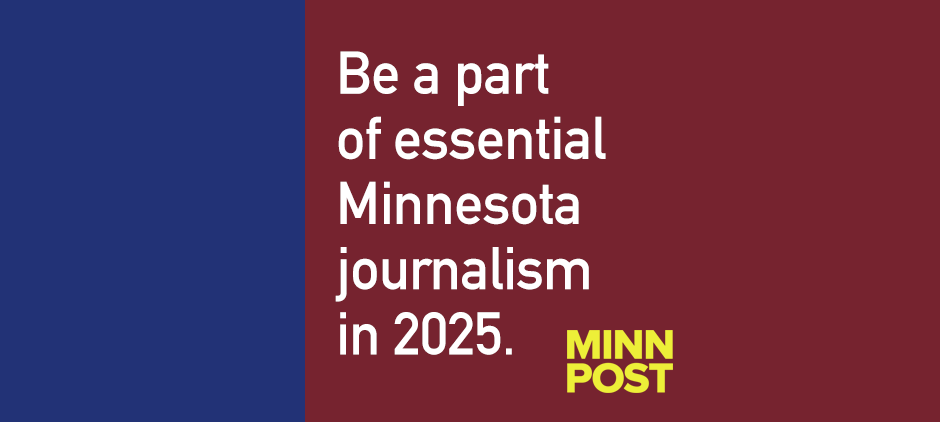Maybe I do this because the Ojibwe worldview could not conceive of influencing the land, or aki (earth), so any notion of who influences what must be turned upside down and inside out by asking: “In what ways has aki shaped us? In what ways has everything about this land and sky, this place called Minnesota—all things animate, inanimate, and spiritual—shaped the Ojibwe?”
How the Ojibwe have helped shape the state’s people—inclusive of cultures, institutions, languages, beliefs, and ways of being—is another matter, however, and some knowledge of Ojibwe history is helpful in understanding our influence.
The Story of the Seven Fires
Ojibwe oral history tells us that the migration of our ancestors to the Minnesota region beginning in approximately 900 CE resulted from a series of prophecies. In the telling of the story, seven prophets appeared out of the ocean and each told a prophecy of what would happen to the Ojibwe people.
The first prophet said the Ojibwe should move west from the eastern ocean or they would perish, and that they would know that they had reached the chosen land when they came to a place where food grew on water. The food was mahnomen (wild rice), found in Minnesota’s shallow northern lakes.
Each of the other prophets predicted parts of the Ojibwe story, too: the coming of the light-skinned race (Europeans) and the resulting generations of great suffering; of when the People would become lost spiritually, emotionally, psychologically, and physically; of the loss of their lands; the taking of their children (in the mission and boarding school era); Christianization and the banning of their traditional spiritual beliefs; and the decline in Ojibwe language use, cultural practices, and ways of being.

The seventh prophet said there eventually would be a time of healing from the period of great suffering and described the cultural and spiritual renaissance the Ojibwe are experiencing today, when some Ojibwe would return to their language and spiritual teachings, and to living out the values of the Good Path (Mino-Bimaadiziwin). Gitchi Manito (Great Spirit, or God) gave these values to the Ojibwe at the time of our creation.
Knowledge of the teachings of the Seven Fires is important for Ojibwe people because it reminds us we are part of a larger plan. As a result of the story, we know why we are here, living in the region, including Minnesota, and we know why non-Native people are here, as well. The story also reminds us why we came here, how historical events have shaped who we are today, and, more importantly, our role in perhaps shaping the way all of us as citizens of this earth should care for the precious resources of the air, water, and land.
Maple syrup, moccasins, the fur trade and more
An introductory, and in many ways superficial, way to look at how the Ojibwe have shaped the state is through contributions. The first major impact began with the arrival of the French into the Great Lakes region in the 1600s and the resulting fur trade, whereby the Ojibwe and other tribes traded furs for guns, metal tools, pots, pans, utensils, cloth, and alcohol. During that period, the Ojibwe had a global impact on the economy as the beaver changed European fashion tastes and some traders, particularly John Jacob Astor, became rich as a result of trading with the Ojibwe.
No waffle or pancake served up in an restaurant or home in Minnesota would be the same without pure maple syrup, first harvested and boiled down by the Ojibwe and their tribal relatives. And the state’s world-famous casseroles would not be the same without wild rice, initially gathered and eaten by the tribes (Dakota and Cheyenne, to name two) that first lived in the land that is now Minnesota. Today, however, it is the Ojibwe who are known for wild rice.
Minnesota winters would seem even longer and more brutal if we didn’t have the toboggan for sliding down snow-covered hills and snowshoes for hiking through the woods. The Ojibwe and their tribal relatives first developed the toboggan and snowshoes. Indeed, toboggan is an Ojibwe word, added to the English language by early white pioneers. So is moccasin. The Ojibwe and their tribal relatives first developed moccasins, and lounging around the home wouldn’t be the same without them.
What would we call a moose if the Ojibwe hadn’t first called it moose? What would we name the Mesabi Iron Range and the towns of Bemidji, Bena, Biwabik, Mahnomen, Ogema, and Washkish if they hadn’t been given names of Ojibwe origin?
And the list goes on: floral beadwork and birch bark basketry handcrafted by Ojibwe artisans are displayed in state and county museums, artist studios, tourist shops, and Minnesota homes; Ojibwe dream catchers dangle from thousands of rear-view mirrors. Birch bark canoes, developed by the Ojibwe, built with cedar hulls and a birch bark covering, traversed Minnesota’s beautiful rivers and lakes. Early French traders abandoned their watercraft and adopted the Ojibwe canoe, which was superior in design and efficiency. The design is still replicated in most non-motorized regional watercraft. Today, the Boundary Waters Canoe Area, in particular, would not be the same without the canoe, which is similar in design to those made by its original Ojibwe builders.
Finally, the Ojibwe migration into the western Great Lakes Region in the late 1600s and early 1700s also influenced the Dakota move to the southern region of the state, although better hunting also played a role in the Dakota’s southward and westward migration.
Education and self-determination
An overlooked influence of the Ojibwe on the state (and the nation) is in the area of leadership in educational reform. In 1969, two Ojibwe educators, Rosemary Christensen (Bad River) and Will Antell (White Earth), spearheaded the formation of the National Indian Education Association (NIEA) to combat the disproportionately high dropout rate and low achievement of Native students in public schools. The first NIEA convention was held at the former Andrews Hotel in Minneapolis.
The early work of Christensen and Antell in Native education in Minnesota eventually led the way for other Ojibwe and Dakota leaders to push for the development of scholarship programs. These programs would allow more of the state’s Native students to access higher education and PK–12 culture, language, and academic support programs in public schools, tribal schools (on the Mille Lacs, Fond du Lac, Leech Lake, and White Earth reservations), and tribal colleges (at White Earth, Fond du Lac, and Leech Lake).
About the same time, Native people’s cries for social justice and self-determination rang out in the streets along Franklin Avenue in Minneapolis and in its back alleys, where the American Indian Movement (AIM) was born, led by Dennis Banks (Leech Lake) and brothers Clyde and Vernon Bellecourt (White Earth). Started in 1968 as a citizens’ patrol to combat police harassment and mistreatment of Native people, AIM grew to become a national and international presence in Native people’s struggle for self-determination.
At the heart of AIM’s founding mission was a call for the return to spirituality for Native people as a way to combat centuries of injustice and maltreatment, to fight for the reversal of state and national policies that negatively affect Native people, and to demand that the federal government fulfill its treaty obligations.
Some mainstream and traditional Native (and non-Native) people might question the often assertive and confrontational strategies used by AIM in its efforts to affect social change. But no one can challenge the organization’s lasting influence on the Native self-determination movement (the ability of Native people to make their own decisions determining the future) or the cultural and spiritual renaissance of Native people that began in the late 1960s during the height of America’s civil rights movement, of which AIM was a part.
The voices of Ojibwe writers and artists also have had a deep impact on our state’s writing and art scene, beginning with William Warren, who wrote the first history of the Ojibwe people, which is still used as the definitive source for Ojibwe history. Minnesota has been blessed with many other fine writers, including Turtle Mountain (North Dakota) transplant Louise Erdrich, a nationally known novelist and poet who lives and works in Minnesota.
Books by Gerald Vizenor (White Earth), Kim Blaeser (White Earth), Winona LaDuke (White Earth), Peter Razor (Fond du Lac), Ignatia Broker (White Earth), Jim Northrup (Fond du Lac), and Linda LeGarde Grover (Bois Forte) have large groups of followers throughout the country. And in major U.S. galleries, works are shown by these noted Ojibwe artists: George Morrison (Grand Portage), Patrick DesJarlait (Red Lake), Steve Premo (Mille Lacs), Frank Big Bear (White Earth), Joe Geshick (Bois Forte), and Carl Gawboy (Bois Forte).
Native American gaming contributions
Many Ojibwe people of my post-World War II generation grew up poor. Until the growth of tribal governments in the 1960s and the jobs they created, there was little in the way of work in many Ojibwe communities. Without jobs in the community, there was little hope. Many people left the reservations for urban areas, where they continued to live in poverty, holding low-wage jobs.
From the late 1960s until the early 1990s, the economic landscape improved as tribal governments expanded the education, human services, and health care they offered to their citizenry. Some tribes operated small construction companies, landfills, stores, and other small businesses. However, it wasn’t until the advent of the Indian Regulatory Gaming Act in 1988 that tribal governments achieved their greatest impact.
Not since the fur trade era have Ojibwe entrepreneurs affected the regional economy so profoundly. The Ojibwe reservations of Minnesota operate thirteen of the eighteen casino-resorts throughout the state. According to the Minnesota Indian Gaming Association figures (2007), tribal governments and casinos employ 20,550 persons and supply $576 million in wages; $539 million in services and goods; and $329 million in capital (building) projects. Tribes expend $1.4 billion, and that stimulates another $1.31 million in other economic spending. The indirect impact of tribal government and casino jobs results in an additional 21,150 jobs and $774 million in income.
Ojibwe communities have used the resources created from the gaming industry to create tribal infrastructure: schools, roads, improved health care, services for the elderly, and housing, to name a few. Jobs translate to hope. And a sense of hope hasn’t been felt in our communities in many, many generations.
The will to endure
Perhaps the greatest impact of the Ojibwe on the state, however, is our very presence, our survival as a people. We are a living testament to the tenacity of culture, of the will to endure, even to flourish. Despite our language being banned in the mission and boarding schools that our ancestors were forced to attend from the 1870s until well into the 1960s, it survived and is being joyfully taught in Minnesota tribal, alternative, and public colleges, and at language tables in our communities.
Although our ancestors’ spiritual practices were banned by Indian agents, priests, and missionaries, and Christianity was forced upon the people, our spiritual beliefs are thriving today in our lodges and ceremonies. And despite the historical despair of losing much of our traditional land (see the summary points for more detail on the land cession treaty period), of many of our ancestors becoming poor and dependent on rations, of having generations suffer all the social ills of people who have been dispossessed, of losing hope, we are still here—still strong—still Ojibwe.

There is one last thing. The story of the Seven Fires contains a final prophecy. The prophecy tells that non-Native people, the light-skinned race, eventually will be given a choice of two paths. One path will lead to peace, love, and brotherhood. The other will lead to the destruction of the earth. Some of our traditional people say that the prophecy refers to the sacred trust we have in caring for aki, our mother earth, to stop poisoning the land, water, sky, and collective spirit of this beautiful place. The other path can only lead to suffering for all of earth’s people, and the ultimate destruction of the planet.
The final prophecy tells us why we Ojibwe are here, to share the story of the final prophecy in hopes that it will influence the ways non-Native people treat this beautiful earth. That is a gift our ancestors passed down to us and that we now share with you.
Mi-iw! That is all.
For more information on this topic, check out the original entry on MNopedia.








Leave a Reply